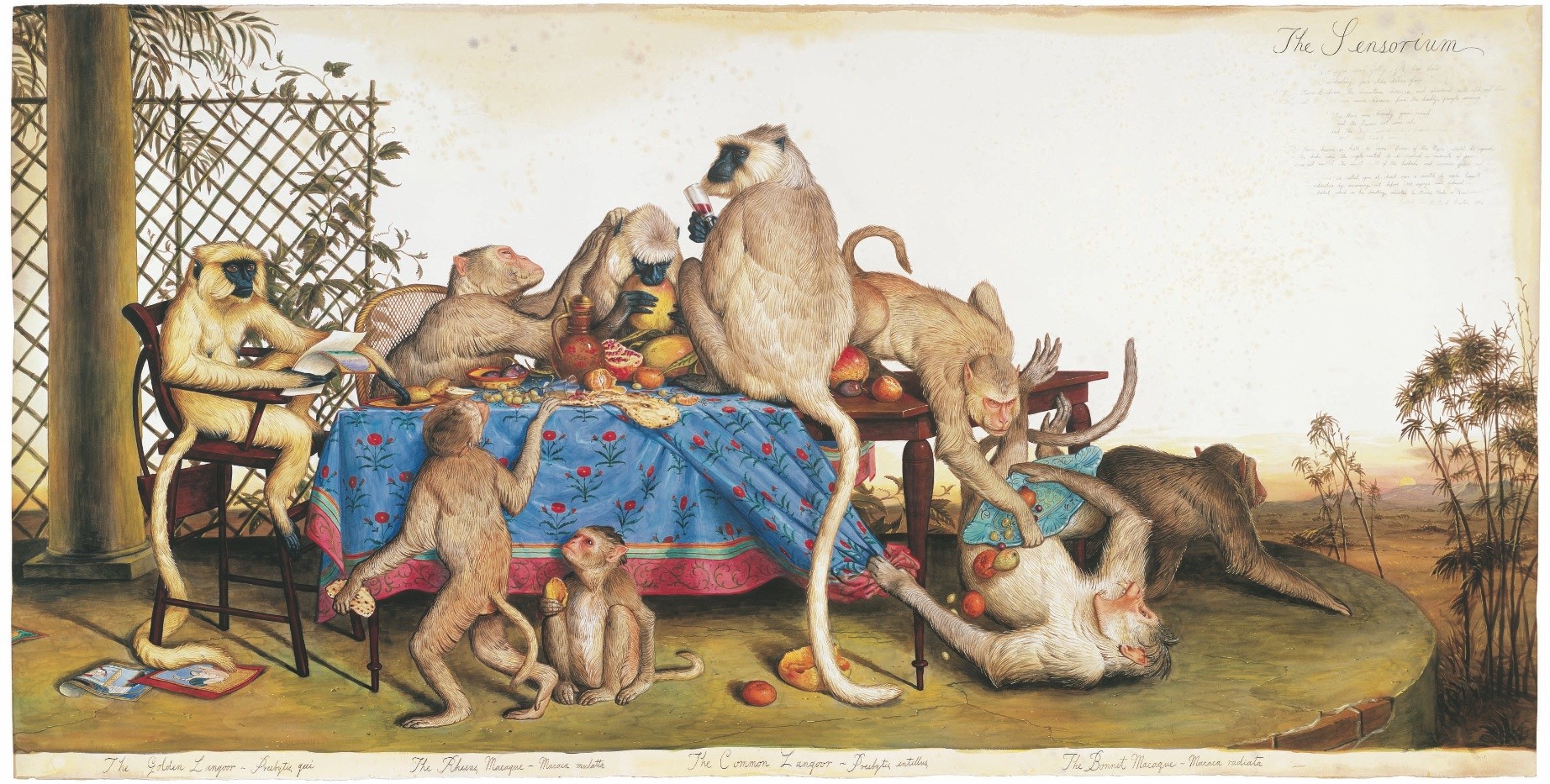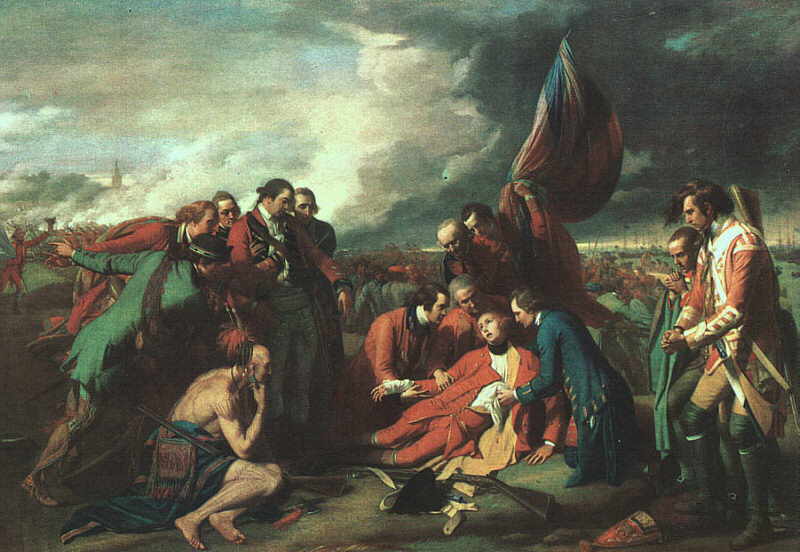Walton Ford – Audubon meets Bosch
It probably comes as no surprise to anyone that I spend a lot of time on the internet, and a large portion of that time is bombarding myself with images – tumblr blogs, pinterest, artist blogs, online magazines, self-imposed google image search scavenger hunts, you name it. This is why every now and then, for all the vast amounts of dross, I have the good fortune to discover a brilliant gem that I have never heard of before and get my mind blown. Like, say, the work of Walton Ford.
Pretty astonishing,right? This description of his book Tigers of Wrath, Horses of Instruction pretty much sums it up:
The paintings of Walton Ford (b. 1960) combine superb draftsmanship with layers of allegorical and lyrical symbolism. “It’s as if John James Audubon had been visited by the spirit of Hieronymous Bosch” is how one critic has described the unsettling impact of Ford’s powerful works, with their sometimes violent imagery and their trenchant political and social commentary on history, colonialism, and the precarious relationship between man and animal.
This striking volume is the first overview of Ford’s dazzling paintings-and the only book currently in print on this increasingly popular artist. Printed to coincide with a Ford exhibition at the Paul Kasmin Gallery in New York, the book includes an essay by screenwriter Steven Katz and an interview with the artist by Dodie Kazanjian, who, in a recent article in Vogue, concluded: “A Walton Ford painting can be enjoyed on many levels, but it just so happens that the entry level is dazzling draftsmanship and sheer, knockout visual pleasure.”
This encapsulates Ford’s work neatly, especially the phrase “as if John James Audubon had been visited by the spirit of Heironymus Bosch”. …and then went on to create intensely detailed renderings in watercolour of animals in allegorical scenes, echoing historical paintings and mythology. Unfortunately, a critical aspect of Ford’s work that the internet is really lame at communicating is its scale. These are no mere exquisitely detailed illustrations in a handy pocketbook, these are epic.
Not only is Ford’s work a stunning display of mastery and grandeur, but the guy has a sense of humour which is always a bonus. As a Canadian, I grew up with this famous painting appearing in my history books throughout school:
Here we have the death of General Wolfe (leader of the British forces) dying of his wounds at the Battle of the Plains of Abraham (the Battle of Quebec, 1759) where the British defeated the French, basically conquering what is now Canada. The general of the French forces (Montcalm) died that day too, so don’t feel to bad for this guy.
…and here’s Ford’s take on it, a series of hand-made prints (6 copper plates, hardground etching, aquatint, spit bite aquatint, drypoint, scraping and burnishing on white Rives paper) replacing all the figures with Carolina parakeets, the extinct species that was the only parrot native to the eastern US.

Dying Words (2008)
A sense of humour bordering on Duchampian, I think. Well, I call it a sense of humour. Of course this is not something an artist always wants to hear, as art tends to take itself pretty seriously. In the intro to an interview in ArtInfo, the writer states “Repurposing a field-guide aesthetic, Ford composes dense allegories that make sometimes pointed, sometimes sidelong allusions to everything from conservationism and consumption to war, politics and imperialism.” Sure, that’s one way of looking at it. Another way of describing this is a sense of humour. Not in the sense of a joke (per se) but cocking a snook at the gravitas of history itself. Humour is an essentially anti-authoritarian stance that underpins a good majority of postmodernism, I suspect, but everyone’s so scared of being accused of revealing that the Emperor wears no clothes that they feel that they have to daintily position themselves within very academic contexts when describing art, essentially neutering the anarchic power that humour wields. But I digress.
Some of my contemporaries are just interested in talking about fashion or pornography. You have an American Apparel-style theory of making art, and I couldn’t be more bored with that. But that seems to be all that some painters seem to be interested in now.
And I think, “God, you know, look at what’s happening in the world. Is that your preoccupation: Celebrity, glamour and pornography? Is that really what we’re going to go down in flames celebrating?”
I’m more interested in the project that I’m working on, which has to do with natural history and human culture and the intersection between them.
I am less interested in engaging issues of contemporary theory or something. My work reacts to the history of natural history and the history of people’s interactions with animals and other cultures and things like that.
– Walton Ford, ArtInfo (2007 interview with William Hanley)
So there you have it. Walton Ford is awesome and you should check out more of his stuff. The book Pancha Tantra includes an excellent selection of his work at an excellent price (thanks, Taschen) but if you’re feeling spendy there’s always Tigers of Wrath, Horses of Instruction. If you’re a traveller, Ford’s work is included in the collections of the Honolulu Museum of Art, MOMA, the Smithsonian, and the Whitney. He is represented by the Paul Kasmin Gallery in NYC.






